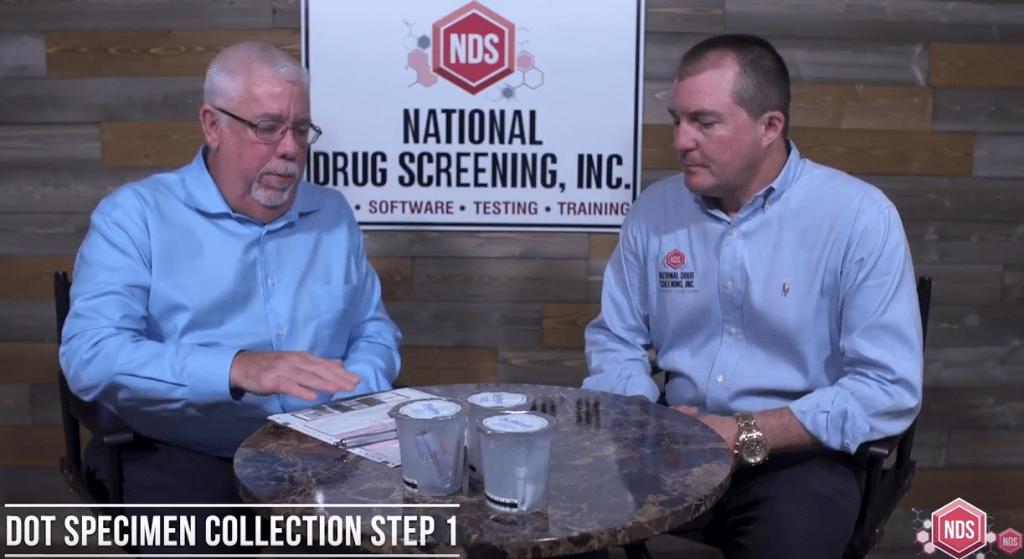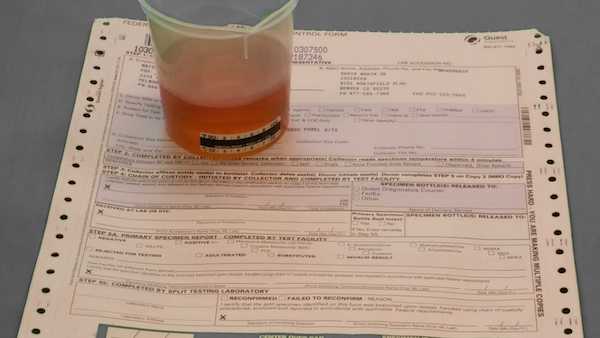This blog post will detail the procedures for a urine specimen collection performed in accordance with DOT regulations for a DOT required drug test. Additional information is provided for situations requiring:
The employee will be asked to provide appropriate identification to the collector upon arrival at the collection site. Acceptable forms of identification include a photo identification (e.g., driver’s license, employee badge issued by the employer, or any other picture identification issued by a Federal, state, or local government agency), or identification by an employer or employer representative.
If the employee cannot produce positive identification, the collector will contact the DER to verify the identity of the employee.
The collector will explain the basic collection procedures to the employee and reviews the instructions on the back of the CCF with the employee. The Collector will maintain personal control over each specimen and CCF throughout the collection process and prevents unauthorized personnel from entering any part of the site in which urine specimens are collected or stored [§40.43(d)(5) and §40.43(e)].
The collector will ask the employee to remove any unnecessary outer clothing (e.g., coat, jacket, hat, etc.) and to leave any briefcase, purse, or other personal belongings he or she is carrying with the outer clothing. The employee can retain his or her wallet. In most cases, lockers are provided for the employee and the employee is provided the key. If the employee asks for a receipt for any belongings left with the collector, the collector must provide one.
The collector will direct the employee to empty his or her pockets and display the items to ensure that no items are present that could be used to adulterate the specimen. If nothing is there, the employee places the items back into the pockets and the collection procedure continues. If the employee refuses to empty his or her pockets, this is considered a refusal to cooperate in the testing process. The DER has the responsibility to make the final determination of a refusal to test. Refusals are considered a positive result that has the same requirements as if the employee tested positive for a drug substance.
The collector will instruct the employee to wash and dry his or her hands while the collector observes, and the collector will direct the employee that they cannot wash their hands until directed to do so.
The collector will either give the employee or allow the employee to select the collection kit or collection container (if it is separate from the kit) from the available supply. Either the collector or the employee, with both present, then unwraps or breaks the seal of the kit or collection container.
The collector will take precautions to ensure that unadulterated specimens are obtained and correctly identified that meet the following requirements
- Bluing agents in toilet tank and all water sources secure [§40.43(b)(1) and (2)]
- Individual positively identified (photo ID, etc.) [§40.61(c)]
- Proper authority contacted if individual fails to arrive at the assigned time [§40.61(a)]
- The donor shall remove any unnecessary outer garments; purses or briefcases shall remain with outer garments [§40.61(f)]
- Donor shall wash and dry his/her hands [§40.63(b)]
- To the greatest extent possible, the collector must keep an employee's collection container within view of both himself/herself and the employee between the time the employee has urinated, and the specimen is sealed [§40.43(d)(2)]
- Any unusual behavior noted on the CCF [§40.63(e)]

The collector will direct the employee to go into the room used for urination and provide a specimen of at least 45 mL. The employee will be directed to not flush the toilet and return with the specimen as soon as possible after completing the void. The collector may set a reasonable time limit for the employee to be inside the bathroom and this time frame should be explained to the employee. This is to the employees benefit as once the urine is voided in the specimen container, it begins to cool down. The specimen must be in the 90 to 100 range to be an acceptable specimen.
The collector will check the temperature of the specimen as soon as the employee hands over the specimen, but no later than four minutes after the employee comes out of the restroom.
After the employee hands the collection container to the collector, the collector unwraps or opens the specimen bottles.
The collector then pours at least 30 mL of urine from the collection container into a specimen bottle and places the lid/cap on the bottle. This will be the primary specimen or “A” bottle. The collector, then pours at least 15 mL into a second bottle and places the lid/cap on the bottle. This will be the “B” bottle used for the split specimen.
The collector will remove the tamper-evident seals from the CCF and place them on each bottle. The collector writes the date on the seals and the employee will be asked to initial the seals. If the employee fails or refuses to initial the seals, the collector will note this in the “Remarks” line of the CCF and complete the collection process. This is not considered a refusal to test.
The collector will now direct the employee to read, sign, and date the certification statement, and provide date of birth, printed name, and day and evening contact telephone numbers in Step 5 of Copy 2 of the CCF.
The collector completes the collector’s portion of the chain of custody on the CCF.
The collector will ensure that all copies of the CCF are legible and complete and will remove Copy 5 from the CCF and give it to the employee. The collector may suggest the employee is to list any prescription or over-the-counter drugs on the employees copy of the CCF. This information may help the employee remember what medications he or she may have taken if a positive result is reported by the laboratory to the MRO.
The collector will place the specimen bottles and Copy 1 of the CCF inside the appropriate pouches of the leak-resistant plastic bag, and seal both pouches. The collector will allow the employee to wash his or her hands at this time and can now leave the collection site.
An immediate supervisor of the Company shall not serve as a collector unless no other collector is available as stated in [§40.31(c)].
When a collection site uses a facility normally used for other purposes, the Company will ensure before the collection that: (1) access to collection materials and specimens is effectively restricted; and (2) the facility is secured against access during the procedure to ensure privacy to the employee and prevent distraction of the collector. Limited-access signs will be posted [§40.43(c)].
Direct Observation Urine Collection
Federal regulations require a collector or observer to directly observe the employee while that employee provides their urine specimen if the employee’s previous urine specimen was out of normal temperature range, or the collector previously observed the employee attempting to tamper or substitute a specimen, or the employee’s previous test result was invalid due to an interfering substance and the employee did not have a legitimate medical explanation, or the employee’s split specimen could not be tested following a non-negative test result. The collector (or the observer) must be of the same gender as the employee for direct observation collections. All return to duty and all follow-up testing shall be collected with direct observation.
Shy Bladder Process (If You Have Difficulty Providing a Urine Specimen)
When the donor does not provide at least 45 milliliters of urine, the collector will follow all provisions of [§40.65(a)] and move into a Shy Bladder process. After the employees first unsuccessful attempt to provide an acceptable specimen, you have up to 3 hours to produce a single specimen of sufficient volume (you can’t combine specimens). The employee is allowed to consume up to 40 ounces of fluid reasonably spread out over the 3 hours. If the employee does not provide a specimen within those 3 hours, the employee must undergo a medical evaluation to determine if there was a medical reason for their inability to do so. If a physician determines that there was no medical reason for not providing the sample, this will be considered a refusal to test, and the employee will be immediately removed from performing safety-sensitive functions and could result in termination of employment. If the employee refuses the physician evaluation, this is a refusal to test, and the employee will be immediately removed from performing safety-sensitive functions and could result in termination of employment.
Training for DOT Urine Specimen Collections for Drug Testing
Computer Based Online Training
Custom training programs, call Joe Reilly at 321-622-2020








